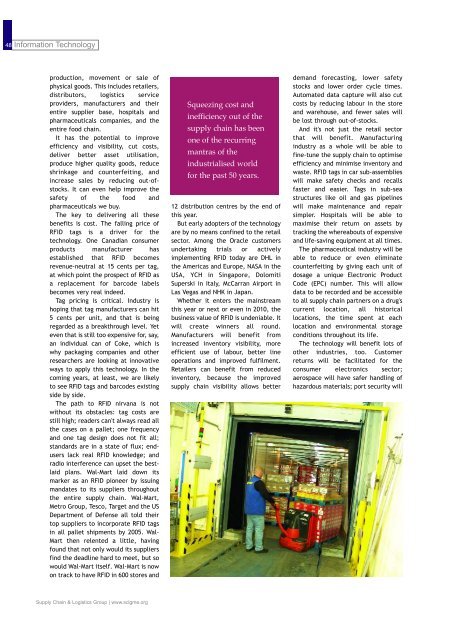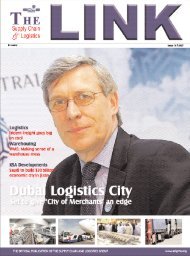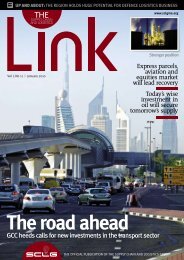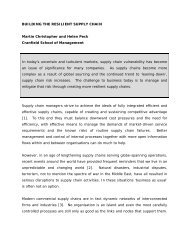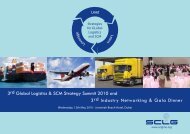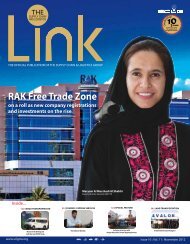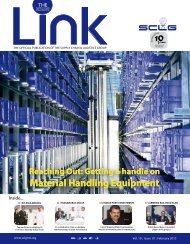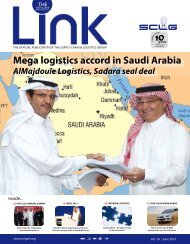Create successful ePaper yourself
Turn your PDF publications into a flip-book with our unique Google optimized e-Paper software.
48<br />
Information Technology<br />
production, movement or sale of<br />
physical goods. This includes retailers,<br />
distributors, logistics service<br />
providers, manufacturers and their<br />
entire supplier base, hospitals and<br />
pharmaceuticals companies, and the<br />
entire food chain.<br />
It has the potential to improve<br />
efficiency and visibility, cut costs,<br />
deliver better asset utilisation,<br />
produce higher quality goods, reduce<br />
shrinkage and counterfeiting, and<br />
increase sales by reducing out-ofstocks.<br />
It can even help improve the<br />
safety of the food and<br />
pharmaceuticals we buy.<br />
The key to delivering all these<br />
benefits is cost. The falling price of<br />
RFID tags is a driver for the<br />
technology. <strong>One</strong> Canadian consumer<br />
products manufacturer has<br />
established that RFID becomes<br />
revenue-neutral at 15 cents per tag,<br />
at which point the prospect of RFID as<br />
a replacement for barcode labels<br />
becomes very real indeed.<br />
Tag pricing is critical. Industry is<br />
hoping that tag manufacturers can hit<br />
5 cents per unit, and that is being<br />
regarded as a breakthrough level. Yet<br />
even that is still too expensive for, say,<br />
an individual can of Coke, which is<br />
why packaging companies and other<br />
researchers are looking at innovative<br />
ways to apply this technology. In the<br />
coming years, at least, we are likely<br />
to see RFID tags and barcodes existing<br />
side by side.<br />
The path to RFID nirvana is not<br />
without its obstacles: tag costs are<br />
still high; readers can't always read all<br />
the cases on a pallet; one frequency<br />
and one tag design does not fit all;<br />
standards are in a state of flux; endusers<br />
lack real RFID knowledge; and<br />
radio interference can upset the bestlaid<br />
plans. Wal-Mart laid down its<br />
marker as an RFID pioneer by issuing<br />
mandates to its suppliers throughout<br />
the entire supply chain. Wal-Mart,<br />
Metro Group, Tesco, Target and the US<br />
Department of Defense all told their<br />
top suppliers to incorporate RFID tags<br />
in all pallet shipments by 2005. Wal-<br />
Mart then relented a little, having<br />
found that not only would its suppliers<br />
find the deadline hard to meet, but so<br />
would Wal-Mart itself. Wal-Mart is now<br />
on track to have RFID in 600 stores and<br />
Squeezing cost and<br />
inefficiency out of the<br />
supply chain has been<br />
one of the recurring<br />
mantras of the<br />
industrialised world<br />
for the past 50 years.<br />
12 distribution centres by the end of<br />
this year.<br />
But early adopters of the technology<br />
are by no means confined to the retail<br />
sector. Among the Oracle customers<br />
undertaking trials or actively<br />
implementing RFID today are DHL in<br />
the Americas and Europe, NASA in the<br />
USA, YCH in Singapore, Dolomiti<br />
Superski in Italy, McCarran Airport in<br />
Las Vegas and NHK in Japan.<br />
Whether it enters the mainstream<br />
this year or next or even in 2010, the<br />
business value of RFID is undeniable. It<br />
will create winners all round.<br />
Manufacturers will benefit from<br />
increased inventory visibility, more<br />
efficient use of labour, better line<br />
operations and improved fulfilment.<br />
Retailers can benefit from reduced<br />
inventory, because the improved<br />
supply chain visibility allows better<br />
demand forecasting, lower safety<br />
stocks and lower order cycle times.<br />
Automated data capture will also cut<br />
costs by reducing labour in the store<br />
and warehouse, and fewer sales will<br />
be lost through out-of-stocks.<br />
And it's not just the retail sector<br />
that will benefit. Manufacturing<br />
industry as a whole will be able to<br />
fine-tune the supply chain to optimise<br />
efficiency and minimise inventory and<br />
waste. RFID tags in car sub-assemblies<br />
will make safety checks and recalls<br />
faster and easier. Tags in sub-sea<br />
structures like oil and gas pipelines<br />
will make maintenance and repair<br />
simpler. Hospitals will be able to<br />
maximise their return on assets by<br />
tracking the whereabouts of expensive<br />
and life-saving equipment at all times.<br />
The pharmaceutical industry will be<br />
able to reduce or even eliminate<br />
counterfeiting by giving each unit of<br />
dosage a unique Electronic Product<br />
Code (EPC) number. This will allow<br />
data to be recorded and be accessible<br />
to all supply chain partners on a drug's<br />
current location, all historical<br />
locations, the time spent at each<br />
location and environmental storage<br />
conditions throughout its life.<br />
The technology will benefit lots of<br />
other industries, too. Customer<br />
returns will be facilitated for the<br />
consumer electronics sector;<br />
aerospace will have safer handling of<br />
hazardous materials; port security will<br />
Supply Chain & Logistics Group | www.sclgme.org


